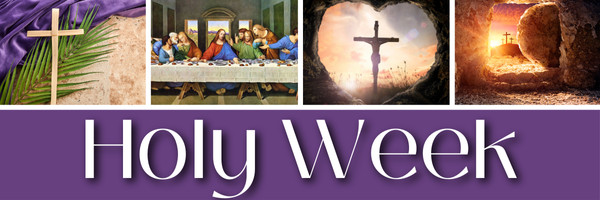Thebaid
FREE Catholic Classes
The valley of the Nile, under Roman domination, was divided into four provinces: Lower and Upper Egypt, Lower and Upper Thebaid. The last two comprised the upper part of the valley. During the fourth to fifth centuries it was the chosen land of the monks, who by their sanctity and by the form they impressed on the monastic system greatly influenced the East and the West. Their monasteries may be divided into two groups. The best known is the Pachomian group, founded and legislated for by St. Pachomius. They formed a real religious order with Tabenna as a mother-house and its superior as their general. Besides Tabenna there were Peboou, Schenesit, Akhmin, Esneh, Monchosis, Thebaid, Tesmine, Hermopolis, and Armoutim. Saint Pachomius governed this group till his death (346), and was succeeded by Abbot Orcisius, and then by Abbot Theodore. There was a community of women, governed by Pachomius's sister, following the same rule as the men. The life of the holy founder and the rule he drew up reveal the interior organization of these monasteries and the congregation. It has all the essential characteristics of cenobitic religious life. Vows of poverty, chastity, and obedience, a dress distinct from that of secular persons, lengthy psalmodies, manual work, and penitential exercises. The monks lived in huts scattered in groups. The groups were enclosed by a wall and formed the monastery. The superior general had absolute authority over each house and over its superior. He held a general assembly of all the religious twice a year. Bgol founded at Atripe a group distinct from that of Tabenna. We know of it from the life of his successor Schnoudi. The monks even increased the austerities prescribed by St. Pachomius and could change from the cenobitic to the eremetical life. Schnoudi died about 452 at the age of 118. His reform had only a mediocre success.
The eremetical life was introduced into the Lower Thebaid by St. Anthony. Born in 251, he embraced the ascetic life at the age of twenty; then impelled by a love of solitude he buried himself in the desert. After twenty years of complete isolation the fame of his sanctity drew around him disciples who imitated his mode of life. Like him they were hermits though remaining under his authority. Their solitude was relative. Those more advanced in years had one or more disciples, whom they instructed in the paths of perfection. Others had companions or neighbours. They visited one another. Grottoes or huts like those of the fellaheen served them as cells. The rules called by St. Anthony's name are not his composition; but his biography, compiled by his admirer and friend St. Athanasius in 365, preserves the memory of his virtues and his teaching. The author wished to illustrate what the life of a monk should be. It influenced the development of eastern and western monachism very considerably. Most of the Egyptian monks of that period were more or less directly connected with the school of St. Anthony, for instance the two Macarii, Isidore, Heraclides, and Pambo, who are looked upon as the founders of the group of Nitria. The group of Scete derives its origin from the same school. They were numerous fervent centres of a partly cenobitical, partly eremetical life. The "Historica Lausiaca" of Palladius gives us the details of the ordinary life of the Nitrian monks ; the "Apophthegmata patrum" and the "Vitae patrum" tell us those of the Scete. In the wilderness along the two banks of the Nile there were many monks, living some alone, some in groups. Others dwelt in populated regions, some even in the towns. The monks disappeared with the fall of the Byzantine domination in these countries and the success of the Saracen invaders. Nothing remains of Tabenna. the two monasteries of St. Anthony and Nitria by their name and location recall those ancient days. The rules observed there are entirely different from those of the fourth and fifth centuries.
Join the Movement
When you sign up below, you don't just join an email list - you're joining an entire movement for Free world class Catholic education.

-

- Stations of the Cross
- Easter / Lent
- 5 Lenten Prayers
- Ash Wednesday
- Living Lent
- 7 Morning Prayers
- Mysteries of the Rosary
- Litany of the Bl. Virgin Mary
- Popular Saints
- Popular Prayers
- Female Saints
- Saint Feast Days by Month
- Pray the Rosary
The Sacred Triduum: Holy Thursday, Good Friday and Easter. The Mystery of Faith
The Silent Love of Holy Thursday
UK Supreme Court Stands Firm, ‘Woman’ Means Biological Female
Daily Catholic
 Daily Readings for Thursday, April 17, 2025
Daily Readings for Thursday, April 17, 2025 St. Anicetus: Saint of the Day for Thursday, April 17, 2025
St. Anicetus: Saint of the Day for Thursday, April 17, 2025 Prayer to Love God above all Things: Prayer of the Day for Thursday, April 17, 2025
Prayer to Love God above all Things: Prayer of the Day for Thursday, April 17, 2025 Daily Readings for Wednesday, April 16, 2025
Daily Readings for Wednesday, April 16, 2025 St. Bernadette: Saint of the Day for Wednesday, April 16, 2025
St. Bernadette: Saint of the Day for Wednesday, April 16, 2025- Prayer for our Family #1: Prayer of the Day for Wednesday, April 16, 2025
![]()
Copyright 2025 Catholic Online. All materials contained on this site, whether written, audible or visual are the exclusive property of Catholic Online and are protected under U.S. and International copyright laws, © Copyright 2025 Catholic Online. Any unauthorized use, without prior written consent of Catholic Online is strictly forbidden and prohibited.
Catholic Online is a Project of Your Catholic Voice Foundation, a Not-for-Profit Corporation. Your Catholic Voice Foundation has been granted a recognition of tax exemption under Section 501(c)(3) of the Internal Revenue Code. Federal Tax Identification Number: 81-0596847. Your gift is tax-deductible as allowed by law.


 Daily Readings for Thursday, April 17, 2025
Daily Readings for Thursday, April 17, 2025 St. Anicetus: Saint of the Day for Thursday, April 17, 2025
St. Anicetus: Saint of the Day for Thursday, April 17, 2025 Prayer to Love God above all Things: Prayer of the Day for Thursday, April 17, 2025
Prayer to Love God above all Things: Prayer of the Day for Thursday, April 17, 2025 St. Bernadette: Saint of the Day for Wednesday, April 16, 2025
St. Bernadette: Saint of the Day for Wednesday, April 16, 2025


